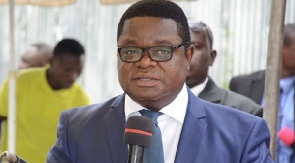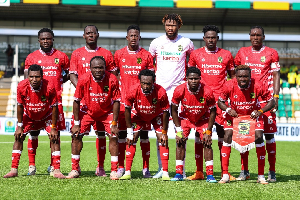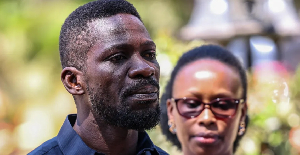In order to address the strategic needs of the country, it is imperative to have a direct linkage between political party manifestos and the country’s long-term development plan, Professor Peter Quartey, Director, Institute of Statistical, Social and Economic Research (ISSER), University of Ghana, has said.
He opined that political party manifestos are important documents that help to deepen the country’s democracy and allow campaign debates to be issues-based. He added, however, that manifestos must be aligned to the long-term development plan of the country.
Prof. Quartey made this statement during a presentation at the 13th National Development Forum in Accra, organised by the National Development Planning Commission (NDPC) and dubbed, “Towards Election 2020: Political Party Manifestos and Long-Term Strategic Needs of Ghana”.
The Development Forum discussed, among other issues, the long-term sustainability of Ghana’s development agenda.
Prof. Quartey said since a long-term plan is developed based on broad consultations and consensus building, it provides the vision for the country, while manifestos only spell out how to achieve the vision in the short term.
He said it would be difficult to run the country on manifestos and medium-term plans alone, since they oftentimes are not sustainable and can lead to lack of continuity in development projects and programmes.
Ghana@100 agenda
The forum was also used to launch the Ghana@100 long-term development framework, prepared by the National Development Planning Commission (NDPC).
Chairman of the NDPC, Prof. Stephen Adei, said the framework draws on historical lessons as well as emerging development issues and charts a path for the Ghana the country wants by 2057 when the nation turns 100 years.
The framework seeks to provide the continuity in strategic direction necessary for Ghana’s social and economic transformation to achieve the vision of a democratic, inclusive, self-reliant, and developed country by 2057, he said.
The preparation of the document was based on the draft 40-Year Long-Term National Development Plan prepared by NDPC in 2016 and the Ghana Beyond Aid Charter prepared in 2019.
“Ghana@100 envisages a just, free and prosperous nation that guarantees high income per capita of not less than US$50,000 equivalent, with opportunities for all Ghanaians to develop their fullest potential, live healthy and fulfilling lives, and contribute to national development,” Prof. Adei said.
He further explained that this aspiration is founded on a highly industrialised, diversified, export-oriented economy driven by Ghanaian entrepreneurship and producing high-value goods and services.
Other features are a dynamic and globally competitive manufacturing sector, an efficient and climate-smart agricultural sector, sustainably managed natural resources, well-planned human settlements, strong institutions, and an economy that is resilient to both internal and external shocks.
Underpinning the Ghana@100 vision are four key pillars: economic, social, environment, and governance, peace and security.
To accelerate the achievement of the goals of the four pillars are 10 catalytic drivers. These are critical crosscutting driving forces that must be consistently pursued to ensure the successful achievement of the goals.
Business News of Friday, 30 October 2020
Source: thebusiness24online.net
ISSER Director asks parties to link manifestos to long-term dev’t plan
 Professor Peter Quartey, Director, Institute of Statistical, Social and Economic Research (ISSER), U
Professor Peter Quartey, Director, Institute of Statistical, Social and Economic Research (ISSER), U












